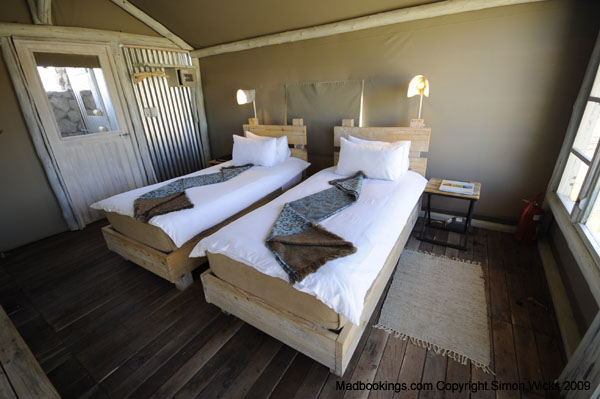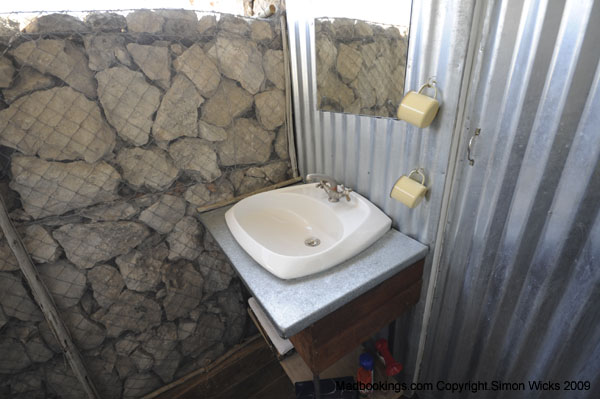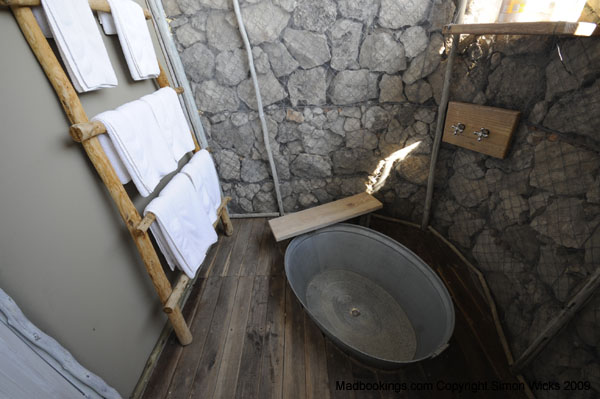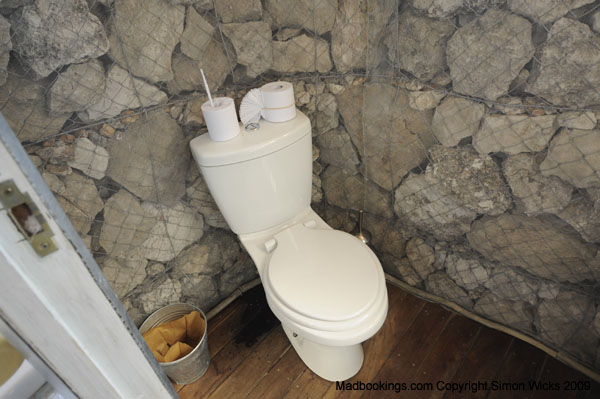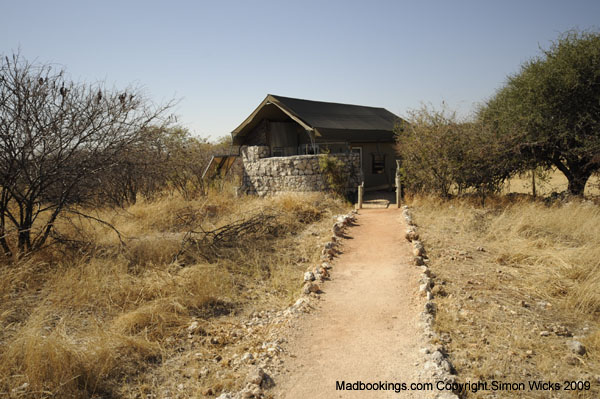
Welcome To Anderson Camp
Situated in close proximity of Etosha National Park, the atmosphere
of Andersson’s Camp makes for a comfortable modern-day base for
exploring this world-class wildlife destination. The camp is an exciting
example of sustainable construction and is named after a famed Swedish
explorer, Charles Andersson, one of the first Europeans to describe
Etosha.
Accommodation Prices at Anderson Camp
Discounts may be available for children sharing with adults, please specify the ages and number of children when making your booking or requesting a quote.
Anderson Camp Prices 2024 and 2025
Accommodation at Anderson Camp
Canvas-style tents raised on wooden decks with double doors to allow for
pleasant views of the bush with covered small veranda.
Canvas-style Tent
Certain tents overlook the waterhole. Each tent has natural stone en-suite
bathroom facilities, with a unique open-air private shower. Basic amenities
are supplied in each tent.
A diesel-powered generator provides the camp’s power. The power
in the tents is 220V and electricity is available from 05:00 to 23:00
each day. 220V plug-points are also provided in the tents to facilitate
recharging – Please remember adaptors and spare batteries. Solar
geyser outside each tent provides the heated water for shower.
Canvas Style Tent Facilities
- Certain tents overlook the waterhole
- En-suite bathroom
- Open air Shower
- Amenities Supplied
- Generator powered
- Solar Geyser
Anderson Camp Amenities and Facilities
The old farmhouse now forms the main area of Andersson's Camp with 20 tents
(16 twin-bedded and 2 family units) radiating outwards into the secluded
mopane woodlands typical of the region. Tents are a clever mix of stone
cladding, canvas and wood, with double-door entrances and a small veranda
that is an extension of the elevated wooden decks on which the tents are
constructed.
Facilities at Anderson Camp
- 16 Twin bedded en-suite Tents
- 4 en-suite Family Units each sleeping 3 guests
- All Tents are en-suite with open-air shower, basic amenities are also
supplied
- Limited laundry service
- Diesel-powered generator
What To Do at Anderson Camp
Andersson's offers a choice of morning and afternoon drives into Etosha
National Park. Game drives are conducted in 9 seater open vehicles. Nature
walks and night drives on the Ongava Game Reserve are also available.
Anderson Camp Activities and Things to Do
- Game Drives to the nearby Etosha National Park
- Enjoy a sundowner at the Camp
1 / 6
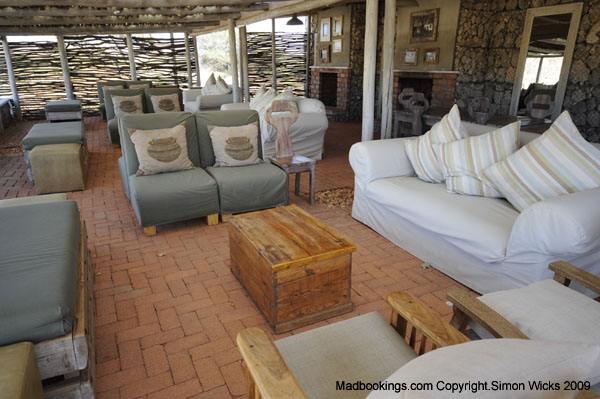
2 / 6

3 / 6
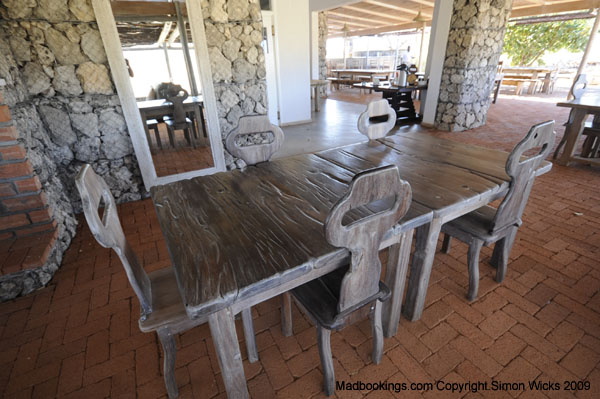
4 / 6

5 / 6
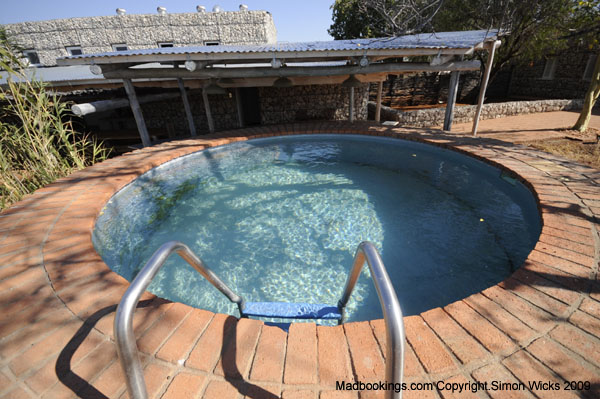
6 / 6
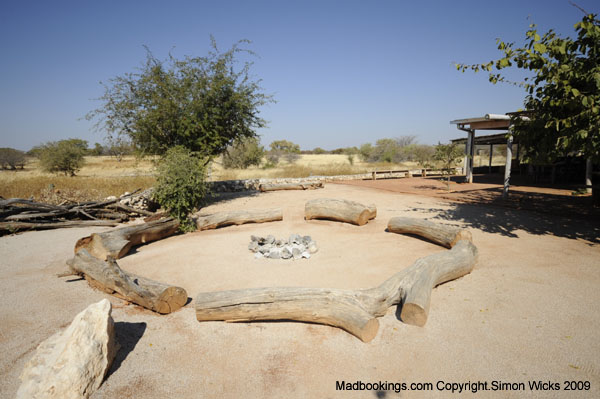
❮ ❯
Andersson’s Camp is ideally situated for independent exploration of
neighbouring Etosha, game drives taking in the plethora of game found here.
This eco-sensitive camp provides an authentic, safe and down-to-earth experience
for small groups, families and independent travellers to the Etosha region
and is easily accessible by either road or air to a nearby private airstrip.

Hire A Car For Your Trip
A road trip across Namibia is an experience you will cherish forever, the freedom to stop wherever you want and explore Namibia on your own terms, for that you will need to hire the right car.

